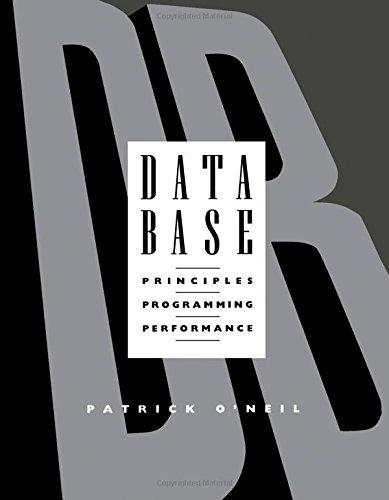Question
Code Provided BinarySearch Class import java.util.Scanner; public class BinarySearch { public static void main(String[] args) { Scanner scr = new Scanner(System.in); System.out.println(Starting Program and initializiing
Code Provided
BinarySearch Class
import java.util.Scanner;
public class BinarySearch {
public static void main(String[] args) {
Scanner scr = new Scanner(System.in);
System.out.println("Starting Program and initializiing arrays.");
//IF your computer takes a very long time to create the arrays, you may decrease the size a little
int size = 100000000;
int[] unsortedArray = new int[size];
int[] sortedArray = new int[size];
for(int i = 0; i < unsortedArray.length; i++) {
unsortedArray[i] = i;
sortedArray[i] = i;
}
System.out.println("Starting to randomize. This may take several seconds.");
randomize(unsortedArray);
String input = "";
long start, totalTime;
int val, index;
while(!input.equals("quit")) {
System.out.print("Please enter a number to search for (between 0 and " + (size-1) + "): ");
input = scr.nextLine();
if(input.equals("quit")) {
continue;
}
val = Integer.parseInt(input);
start = System.nanoTime();
index = linearSearch(val , unsortedArray);
totalTime = System.nanoTime() - start;
displayResults(val,index,totalTime, "linear unsorted");
start = System.nanoTime();
index = linearSearch(val , sortedArray);
totalTime = System.nanoTime() - start;
displayResults(val,index,totalTime, "linear sorted");
start = System.nanoTime();
index = binarySearch(val , sortedArray);
totalTime = System.nanoTime() - start;
displayResults(val,index,totalTime, "binary search");
System.out.println();
}
scr.close();
System.out.println("Goodbye.");
}
public static void displayResults(int val, int index, long totalTime, String searchStyle) {
if(searchStyle.equals("linear unsorted")) {
System.out.println(" Linear Unsorted Search Results:");
} else if (searchStyle.equals("linear sorted")) {
System.out.println(" Linear Sorted Search Results:");
} else {
System.out.println(" Binary Search Results:");
}
if(index == -1) {
System.out.println("The number <" + val +"> was not found. It took " + totalTime + " to search.");
} else {
System.out.println("The number <" + val +"> was found at index <" + index + ">. It took " + totalTime + " nano seconds to search.");
}
}
/**
* Randomly select two different indices in the array and swap them.
* If your array size is n, perform n/2 swaps.
*
* @param array
*/
public static void randomize(int[] array) {
//TODO
}
/**
* Search the array for the passed in val using a sequential search.
* Return the location of val when found.
* If it isn't found return -1.
*
* @param val
* @param array
* @return index or -1
*/
public static int linearSearch(int val, int[] array) {
//TODO
}
/**
* Search the array for the passed in val using binary search.
* Return the location of val when found.
* If it isn't found return -1.
*
* @param val
* @param array
* @return
*/
public static int binarySearch(int val, int[] array) {
//TODO
}
}
------------------------------
Movie Class
public class Movie {
private String name;
private int minutes;
private int tomatoScore;
public Movie(String name, int minutes){
this(name, minutes, 0);
}
public Movie(String name, int minutes, int tomatoScore){
this.name = name;
this.minutes = minutes;
this.tomatoScore = tomatoScore;
}
public int getMinutes(){
return this.minutes;
}
public String getName(){
return this.name;
}
public int getTomatoScore(){
return this.tomatoScore;
}
public void setTomatoScore(int score){
if(score >= 0 && score <= 100){
this.tomatoScore = score;
}
}
public boolean isFresh(){
return this.tomatoScore >= 60;
}
private String convertMinutes(){
return "" + (this.minutes/60) + "hrs " + (this.minutes%60) + "min";
}
public boolean equals(Object other){
if (other instanceof Movie){
Movie tmp = (Movie)other;
return tmp.name.equals(this.name) && tmp.minutes == this.minutes && tmp.tomatoScore == this.tomatoScore;
}
return false;
}
public String toString(){
return "Name: " + this.name + " Length : " + convertMinutes() +
" Tomato Rating : " + (isFresh() ? "Fresh" : "Rotten");
}
}
Step by Step Solution
There are 3 Steps involved in it
Step: 1

Get Instant Access to Expert-Tailored Solutions
See step-by-step solutions with expert insights and AI powered tools for academic success
Step: 2

Step: 3

Ace Your Homework with AI
Get the answers you need in no time with our AI-driven, step-by-step assistance
Get Started


